#ALSO !! i love missouri i missed her . underrated
Explore tagged Tumblr posts
Text
ok rewatching spn because im a fucking idiot. i hate this show
#cant even focus on the 1st season hes haunting me#dudes first serious gf is named cassie the theme here is interracial couples which is hm but#shes pissed at him all the time valid but theyre in love man. the last breakup too was a misunderstanding#“i dont see much hope for us‚ dean.” “well‚ i've seen stranger things. much stranger.” / “goodbye‚ dean.” fuck you fcuk you fuck y#no one read this i hate myself#i remember the whole season except cassie fr some reason??#so normal abt dean#i missed his normal voice btw. did jensen think he sounded cool or smth#their tech is so goofy#its so strange knowing whats foreshadowing or how much itll change over the seasons#u gotta separate this era from the rest yknow. like thats not the same show#im counting every gay and incest joke theres been 3 and 2 respectively i believe#ALSO !! i love missouri i missed her . underrated#they overcomplicated this show man once they brought chuck in#the s1 aesthetic is so good#mmmmmk shutting up i am so sleepy#rambling to myself
0 notes
Photo

Bridging the Gap.
Filmmaker So Yun Um highlights ten underrated Asian American and Pacific Islander films set against the backdrop of America.
Asian American and Pacific Islander Heritage Month has many film lovers seeking to celebrate Asian American cinema. Beyond Minari, Always Be My Maybe and Crazy Rich Asians, there are dozens of films that depict the Asian American experience. In choosing to focus on ten of the lesser-seen, I contemplated the notion of what defines AAPI cinema.
For me, it goes deeper than films that have been directed by, or star, Asian American and Pacific artists. Having watched a wide selection of Asian American films, I can firmly say our cinema, no matter the genre, puts Asian Americans at the forefront on both sides of the camera. I believe the essence of Asian American cinema was born out of resourcefulness, mining themes and ideas that distinctly bridge the gap between Asian and American culture. These films tell stories that explore the vast differences between the two, and the ways in which they coexist, whether comfortably or uncomfortably.
In selecting these ten underrated AAPI films, I searched deep to find stories with uncompromising vision and character; stories about Asians that could only be told within, and against the backdrop of, America. These ten films highlight intimate, distinct and unfiltered experiences mostly unseen at our local multiplexes: family and cultural obligations, generational and cultural gaps, and raw, mostly obscured views of American life.

Chan is Missing (1982) Directed by Wayne Wang, written by Isaac Cronin and Wayne Wang
There would be no Asian American independent cinema without Wayne Wang’s Chan is Missing. Shot on black-and-white film, this striking noir follows Jo, a San Franciscan cab driver, and his nephew, Steve, as they track down the titular Chan after he disappears with their money. Wang’s unpredictable directing career spans neighborhood intrigues, rom-coms and family movies; alongside which, he has kept a strong focus on Asian American stories (he helmed the adaptation of Amy Tan’s generational bestseller, The Joy Luck Club).
In Chan is Missing, for the first time on screen, we get to finally see an “ABC” (American-Born Chinese) story from the source, with an all-access pass to the often misunderstood terrain and people of Chinatown. It’s the tightness of the plot and the authenticity of its characters that make this movie such a classic. Even after 40 years, Chan Is Missing doesn’t feel dated—its laugh-out-loud dialogue (they actually utter the word “FOB”!) and moody tone capture why Chinatown continues to be an enigma. Spoilers: Chinatown runs by its own rules.
Available on DVD via Indiepix Films.
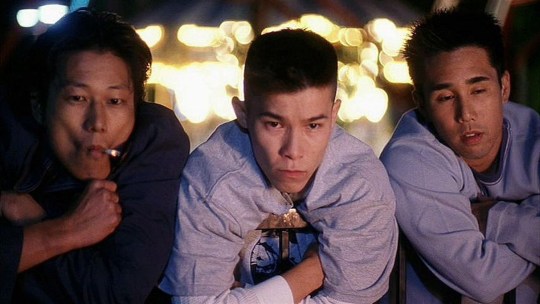
Better Luck Tomorrow (2002) Directed by Justin Lin, written by Ernesto Foronda, Justin Lin and Fabian Marquez
Justin Lin’s directorial debut film is a visionary portrait of Asian Americans that’s still relevant two decades on. Since its release in the early aughts, there has yet to be a film that explores the nuances and complexities of the average Southern-California Asian American teen like this film does. Better Luck Tomorrow focuses on a group of Asian American overachievers who become bored with their lives and enter a world of petty crime. It’s loosely based on four Sunny Hills High School students and the real-life murder of Stuart Tay, a teenager from the OC.
With its depiction of overachieving A+ students who are also foul-mouthed, drug-taking kids, this film was the launching pad for many iconic Asian American actors today—Sung Kang from the Fast and Furious franchise, John Cho (Star Trek) and my personal favorite, Jason Tobin, star of the Warrior TV series. (It’s entertaining to see the seeds of the Fast and Furious series planted in this film in the character of Han, played by Sung Kang, before the explosion of the franchise: one of the characters mutters, “Rumors about us came and went fast and furious”—and the rest is history.)
Better Luck Tomorrow still stands as the most iconic film to capture the suburban Asian American teen existence in all its good, bad and ugly light. “I was part of a movement,” Tobin recalled in this GQ oral history of the film, “and it was a culmination of all the battles I had fought before that to get Asian faces on the big screen.”
Available to stream and rent on multiple platforms.
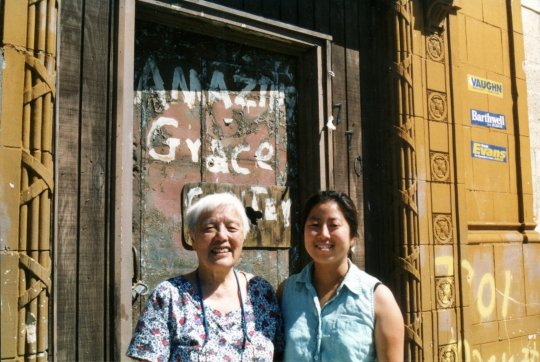
The Grace Lee Project (2005) Directed by Grace Lee
If you’re an Asian American who grew up in California or New York, chances are, you know at least two Grace Lees in your life. But growing up in Missouri, Korean American filmmaker Grace Lee was the only one she knew with her name. She soon discovers that with the name comes a certain stereotype, that of the “good” Asian—quiet, well-behaved and a hard worker. Lee goes on a quest to interview a wide range of women who have the same name and soon discover if this wildly common stereotype is true.
Lee’s witty, autobiographical documentary is effortlessly funny and insightful. The Grace Lee Project dives deep into identity politics to reveal that sometimes, a name is simply a name. This was the start of Grace Lee’s journey as a filmmaker and she continues to be an important voice in not just the documentary space but in narrative stories as well.
Streaming on Kanopy.
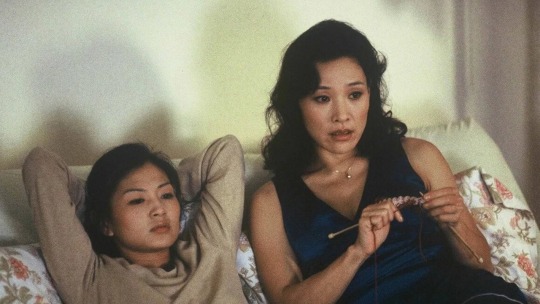
Saving Face (2004) Written and directed by Alice Wu
Alice Wu’s Saving Face is a timeless queer love story. Produced by none other than Will Smith (yes, that Will Smith), Saving Face follows a Chinese American lesbian woman and her traditional mother (played by Michelle Krusiec and Joan Chen, respectively) as both battle with their reluctance to go against cultural expectations and reveal their secret loves. It’s part family drama, part rom-com, exploring expectations specific to Asian women across generations.
While most Asian American films focus on familial obligations through the point of view of the children of immigrants, Wu’s film considers the conflicts of both daughter and mother. For Asian Americans, it’s a tale as old as time but with a twist that shows that no matter how old you get, you still have to, unfortunately, fight to be who you are. I also highly recommend Wu’s spiritual sequel, The Half of It, on Netflix.
Streaming on Amazon Prime and Tubi, and for rent on various VOD platforms.
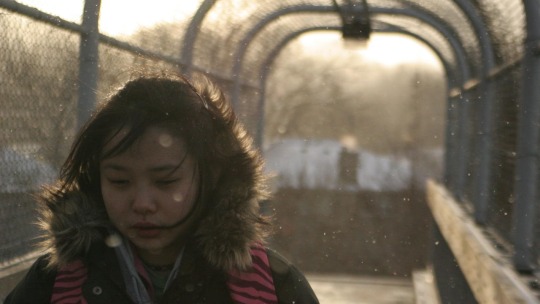
In Between Days (‘방황의 날들’, 2007) Directed by So Yong Kim, written by Bradley Rust Gray and So Yong Kim
So Yong Kim’s debut feature, In Between Days, follows Jiseon Kim, a Korean teen immigrant, who falls in love with her best friend while navigating the challenges of living in a new country. Director Kim is a masterful storyteller and captures life as it should be seen: unfiltered and trivial at times, but using the mundane to find cinematic magic.
I like to categorize So Yong Kim’s work as a showcase of extreme intimacy. Her story features painfully delicate characters and moments so real, you’ll wonder how any of these scenes could be fiction. There’s a sense of vulnerability and loneliness that fills the air as Jiseon struggles to assimilate to a new country, replete with toxic relationships, self-sabotage and unrelenting jealousy. So Yong Kim’s work is so painfully real, it hurts to watch.
Available on Kanopy and Amazon.
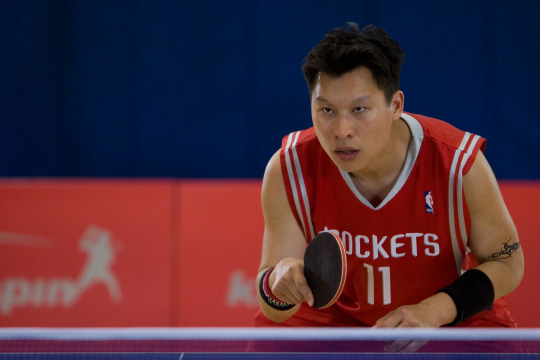
Ping Pong Playa (2007) Directed by Jessica Yu, written by Jimmy Tsai and Jessica Yu
There are two things that embody countless Asian American men’s experience: their love for basketball, and their love of rap music. Ping Pong Playa covers both, and is exactly the kind of Asian American comedy I’ve been waiting for! Christopher “C-Dub” Wang (played by co-writer Jimmy Tsai) is a wannabe baller and a supreme slacker who has to step up to the plate when his family’s business and ping-pong-champion reputation is on the line. In addition to being centered around an Asian family, the core of the film rivals any other low-brow, underdog sport film.
Laugh-out-loud hilarious, this is Academy-Award-winning filmmaker Jessica Yu’s first narrative feature, following a groundbreaking career full of daring documentaries (her Oscar was for this portrait of writer Mark O’Brien, who spent much of his life in an iron lung). Seeing C-Dub as an NBA-loving slacker turned ping-pong playa felt validating; it showed that even if you’re a lazy and immature Asian, you can always find something to succeed at.
Streaming on Tubi, and for rent on Amazon and iTunes.
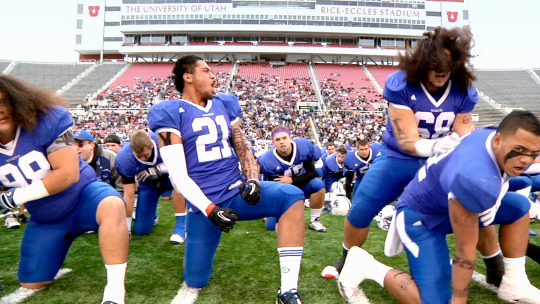
In Football We Trust (2015) Directed by Tony Vainuku and Erika Cohn
While Salt Lake City, Utah, is seen as predominantly a white Mormon town, it in fact has the largest population of Pacific Islanders in the US mainland, due to the strength of the The Church of Jesus Christ of Latter-day Saints’ proselytizing in the Pacific. The documentary In Football We Trust follows four Polynesian high-school students, as they chase their lifelong dream of attaining professional recruitment. Told in moments of adolescence, the film follows the greatest challenges for these four young men, as they chase their dreams while trying to grow up.
In no time, they’re faced with the harsh reality that just maybe, football isn’t all it’s cracked up to be. As much as their hefty attributes and builds serve as their greatest advantages, these boys’ cultural and familial obligations become both their greatest motivations and, possibly, their downfall. Filmed over the span of four years, first time filmmakers Tony Vainuku and Erika Cohn chronicle the NFL hopefuls as they navigate the pressure to balance dreams and family to win a golden ticket out of gang violence and poverty.
Streaming on Kanopy, and for rent on various VOD platforms.
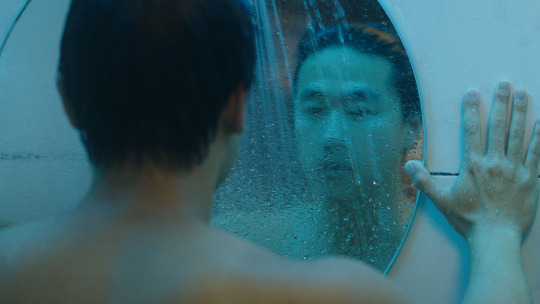
Spa Night (2016) Written and directed by Andrew Ahn
In his directorial debut, Andrew Ahn perfectly captures a specific corner of Los Angeles’ Koreatown. Spa Night’s focus is David, a closeted Korean American teenager who takes a job at a Korean spa to help his struggling family, and then discovers an underground world of gay sex. You may recognize Joe Seo as the goofy bully in the Netflix hit show Cobra Kai, but it’s Spa Night where you can see him truly shine—he won Sundance’s US Dramatic Special Jury Award for Breakthrough Performance.
Seo delivers a powerfully restrained performance, exploring the burden of hiding your true self from your family. Spa Night is more than a coming out story, it’s also about the broken American dream that so many immigrants experience. Ahn’s direction is finely tuned, honing in on the specificity of Koreatown. It is an acutely queer story of second-gen Asian Americans, where coming out is never really about just you, but also your family.
Streaming on Kanopy, and for rent on various VOD platforms.
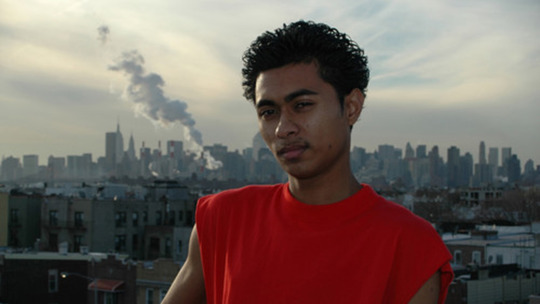
Punching at the Sun (2006) Directed by Tanuj Chopra, written by Tanuj Chopra and Hart Eddy
Mameet is young, angry and has always lived in the shadow of his basketball-legend brother, Sanjay. When Sanjay is suddenly killed during a robbery at the family store, Mameet spirals and takes his anger out on anyone and everyone. Coping with loss at a young age is hard enough, but Punching at the Sun mixes in the specific anxieties of being a South-Asian man amidst the backdrop of post-9/11 America. In doing so, the film addresses the difficulty of juggling teenage angst and immigrant identity—Mameet is not afforded the option to express his anger and grief.
Cathartic and emotionally validating, this is a simple yet nuanced slice-of-life story that conveys the heaviness of growing up with the weight of the world on our shoulders. In Mameet’s case, thank goodness, he ultimately shares some of that burden with his comical friends and knit-tight family.
Available to rent on Vimeo.
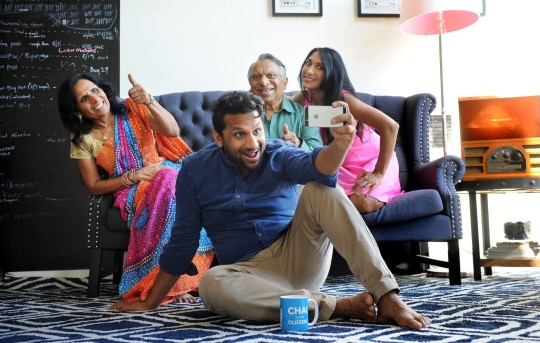
Meet the Patels (2014) Directed by Ravi Patel and Geeta Patel, written by Ravi Patel, Matthew Hamachek, Billy McMillin, and Geeta Patel
In the romantic documentary Meet the Patels, Ravi Patel is a dutiful first-gen son whose parents are continually nagging him to marry a nice Indian girl. With Ravi's sister Geeta Patel co-directing and co-writing, and his parents in the frame, his film (and true-life story) are indeed a family affair. What starts as his journey to find a wife to make his family happy becomes an enlightening intro to Indian culture and modern love—think dating apps, weddings and a Patel Matrimonial Convention (gotta see it to believe).
Humorous as it is outrageously charming, Meet the Patels ultimately shows the struggles and cultural expectations most immigrant offspring face, on top of the million other obstacles of trying to find your one and only true love in this mad, mad world.
Streaming on various platforms.
Related content
Ten Underrated Asian American & Pacific Islander Films, a Letterboxd list
Best Asian American Films: So Yun Um’s list
Debbie Chang’s comprehensive Asian American film canon list (also features Asian-Canadian, Asian-British and other diaspora)
Bellamy’s list of feature-length films directed by Asian Americans
Follow So on Letterboxd
#asian cinema#asian american#aapi#aapi heritage month#asian american film#asian american cinema#john cho#wayne wang#alice wu#pacific islander film#pacific islander cinema#chinese americ#korean american#chinese american#so yun um#female film critic#female filmmaker#directed by women#directed by asian women#letterboxd#ten best#underrated asian american cinema#jessica yu#andrew ahn
10 notes
·
View notes
Text
The Year in Review: 2017 Honorable Mentions
Originally this post was just going to list my top ten films of the year and provide a brief commentary on the honorable mentions that didn’t make the cut but I got carried away with the latter and wrote way too much. So here’s a holiday surprise: a full summation of my year at the movies for you to enjoy as I work on my top ten list.
2016 Addenda
Silence and Paterson were two 2016 films that I was only able to see in early 2017. Had I been able to view them when they were first released, both would have made my 2016 top ten list (which never got a proper post but is accessible via my twitter) and both would have vied for spots in my top three. I highly recommend that everyone watch both films. They are both challenging films in their own ways. Silence is emotionally exhausting; moments of shocking brutality and quiet delicacy abound. It’s an examination of faith worth mulling over regardless of your worldview or philosophy because, in the end, faith is an emanation of our basic humanity. Paterson is similar to Silence in its singular voice and vision. It is meandering, seemingly plotless, and deceptively simple, but sometimes one has to walk slowly in order to see clearly.
Films I Missed
As seen above, every year there are a number of films I am unable to see because I didn’t have time or it wasn’t playing in Michigan or I didn’t have the press credentials to get into a screening. This year, the most disappointing miss was Paul Thomas Anderson’s Phantom Threadwhich, apparently, didn’t make it to my local art theater. I’ve loved Anderson’s last three films (and enjoy his entire filmography, in varying degrees) and believe Phantom Thread would have made it onto my top ten list this year, had I been able to see it. Other films I missed this year, in no particular order, include: A Quiet Passion, The Post, Menashe, The Shape of Water, Three Billboards Outside Ebbing Missouri, I Tonya, Menashe, Graduation, Manifesto, Dawson City: Frozen Time, Call My By Your Name, and The Square.
Honorable and Dishonorable Mentions
Despite missing a lot, I saw more films this year than I have in a long time. This meant that my top ten list was an enjoyable challenge and that a number of films, for a variety of reasons, didn’t make the cut. These are their stories…
Lemon was the worst movie that I saw this year – or, at the very least, it was the movie I disliked the most that I watched all the way through nonetheless. The anti-comedy antihero that Tim Heidecker played to cringey perfection in the weird and wonderful The Comedy should be hereby retired with Brett Gelman’s new film. I think Brett Gelman is a very funny comedian and his wife, Janicza Bravo, who directed Lemon has a unique enough directorial voice but, in a year of terrible men, we didn’t need this one. In a year of interesting commentary on race, we didn’t need this half-hearted, cynical, frustrating attempt.
Lemon
I swore off comic book movies years ago and have only watched DC movies out of morbid, masochistic curiosity (I did not see Wonder Woman or Justice League, for the record, and don’t plan on ever watching them). That said, the first superhero movie to pique my interest in years was Logan. I hadn’t seen an X-Men movie since First Class, which I found rather pointless, but, as a childhood fan of the X-Men comics, something about Logan seemed different. And indeed it was.
Logan works incredibly well as a neo-Western road movie that happens to feature mutated humans with superpowers. Hugh Jackman is probably the best actor to ever lead a comic book movie and here he finally has a movie that is worth his time. The three leads that form a quasi-familial unit in the form of Patrick Stewart, Jackman, and young breakout Dafne Keen, all perform incredibly well together and individually. The movie falters when it tries to introduce its villains and an action-y plotline. The dude with the Anakin Skywalker hand was sufficient, the evil doctor guy played by Richard E. Grant was introduced too late to matter, and the robo-Wolverine or whatever he was called was just kind of awkward and weird and dumb. Still, I was genuinely moved by the end of this movie – brought closer to tears by this movie than any comic book movie I’ve watched. It’s not a great film, but it’s a very good comic book movie. Count it among the few classics.
Another movie that I was surprisingly moved by was Okja. I felt like I had this film’s number from the start. Not that predictability is inherently negative, I just didn’t think I’d get that much out of it. But this movie is incredibly well-crafted. The performances from Jake Gyllenhaal and Tilda Swinton are so over the top that they actually work as caricatures of evil people. This movie feels like a live-action anime. It has the energy, the flow, and the colorful cast of characters. The message is simple and perhaps a bit obvious but it works. And while I will continue blaming it on the severe cold I had while watching the film, I did get choked up at the end. Also, Paul Dano continues to be a tragically underrated performer who needs to be cast in way more projects.
Okja
Okja was very good at world-building and, unsurprisingly, Blade Runner 2049 was great at it. I was wary of this film going in and didn’t even know if I’d ever watch it – tired as I am of reboots and unnecessary sequels. Much to my surprise, though, I was captivated by this movie when it was simply following Ryan Gosling’s K through his detective work and personal life. His relationship with his holographic girlfriend is as weird and sweet and inventive as Her. Denis Villeneuve is a director I’ve written about beforewhose work I enjoy – Arrival remains his best film. Roger Deakins, as widely reported, does great work as he always does in this film. Unfortunately, 2049decided to be a legacy act. The second half of the movie is bogged down in a plot that ties the film in with the original completely unnecessarily.
2049 falls apart when it dredges up old Harry Ford in his all-too-ordinary gray t-shirt. Is he playing Rick Deckard or is he someone’s aging stepdad? Credit where it’s due: Harrison Ford performs dutifully and effectively in this movie but 1: I can’t watch Harrison Ford in a movie anymore without it completely taking me out of the narrative (Oh look, it’s ancient curmudgeon Harrison Ford. Remember Indiana Jones?) and, more importantly, 2: there was no reason why this film needed to bring him back. As I said, there were so many interesting directions this film could have gone but, like The Force Awakens, it grinds to a halt so we can see Harrison Ford react to stuff related to a movie he was in a hundred years ago. Also, Jared Leto is a scenery-chewing nuisance who should not be cast in anything ever. My suggestion: if you didn’t see this movie in IMAX, just wait and watch the 90 minute version I’ll inevitably make in 2018.
And while Blade Runner and Star Wars provided science fiction fodder for franchise devotees, horror fans were treated to a vast array of unique offerings. A horror/drama that got a little over-hyped for me was Raw. As with most gross-out horror films, there were early reports of people passing out and throwing up in screenings. With that in mind, I prepared myself for something truly shocking and was, honestly, somewhat disappointed. The story centers on a college freshman who discovers she has a hunger for human flesh. It’s a fun film if you’re a fan of body horror but even so the scenes get rather formulaic. There’s some great, atmospheric stuff in this movie, including some solid cinematography, but the moments when something gross is about to happen are never a surprise. Raw's great failure is its ending which ties such a deliciously messy story together too neatly.
Raw
Another horror film that could be accused of receiving too much early hype was, of course, mother! This movie is incredibly effective as a comedy of manners. Darren Aronofsky does an amazing job of capturing the panic and confusion of actual nightmares where you know the people populating your dream should be able to hear and understand you but their blank, unresponsive stares simply add to the horror. I had no idea what mother!was actually about or where it was going while I watched it and I found myself disappointed in myself once I realized. The thing is, though, even when the film’s narrative fully commits to its pedestrian eschatology, it’s still churning out moments that are absolutely bonkers. The ways mother! doesn’t work might be more interesting than the ways it does (Javier Bardem and Michelle Pfeiffer are particularly effective; Jennifer Lawrence remains an amateurish performer) but…I kind of loved this film in all of its sadistic, messy glory.
I really wanted mother! to make it into my top ten list simply because it felt so different. That is, until I saw another film about the dismantling of domesticity: The Killing of a Sacred Deer. I should state for the record that I was not a huge fan of Yorgos Lanthimos’s last film The Lobster. That film always felt a bit obvious and stunted to me – though I’m a big fan of both Colin Farrell and Rachel Weisz. Sacred Deer is a similar beast. The deadpan, monotone dialogue takes a lot of getting used to and I’m sure it’ll be a sticking point for a lot of viewers. It remains an interesting and puzzling choice by Lanthimos who seems to want to strip his films of melodramatic artifice while writing screenplays that contain the drama of Greek tragedies.
Sacred Deer is a film that knows it’s weird, knows you think it’s weird, but also knows it’s weirdness is making you feel weird. If you can let yourself get into it, this is a pretty rewarding film reminiscent of The Shining (I know this is blasphemy but I actually like it more). Colin Farrell and Nicole Kidman both give incredibly performances with what is surely challenging material to work with. The film’s real star, though, is Dunkirk breakout Barry Keoghan. As his character grows more strange and sinister, he somehow becomes even more magnetic. Regardless of what you think of the movie, Keoghan is one of the best performers of the year.
The Killing of a Sacred Deer
Of course, one cannot discuss the year’s horror films without mentioning Get Out. I have to admit I had trouble with this film for a number of months. I really struggled to see what everyone else was seeing in it. That is, until I watched Detroit. Both films are ostensibly horror flicks where the great evil is white power. Kathryn Bigelow’s film posits itself as a visceral work of journalism but beneath that facade, it’s clear she has nothing to say. Her camera is in a constant Paul Greengrass-esque tremor whether it’s a tense moment or not. Detroitis false immediacy. Detroit is torture porn. Get Out, on the other hand, has a voice and it came to make a statement. Get Out, like They Liveor Night of the Living Dead before it, is not high art. It is, for better or worse, a reaction to the sociopolitical milieu that surrounds it. Hopefully it will soon be considered the first of innumerable, blockbuster works by filmmakers of color that invades the cultural consciousness. For now, Get Out is a film that manages to be both scary and funny thanks to Jordan Peele’s vision and direction.
Logan Lucky and Baby Driver were two films by directors whose work I enjoy and admire immensely that just didn’t quite bring enough to the table to make it into a top ten list. Both films are self-assured, fun, and full of magnetic characters (save for the titular Baby) but they also seem to be exercises in style over substance. Still, I’d recommend both films in a heartbeat.
Another film that comes highly recommended by yours truly that seems to have been completely forgotten is The Red Turtle: an animated, nearly-wordless folk tale about nature, love, and letting go. The Red Turtle is refreshingly simple and unassuming – I’ve heard it described as a children’s film and, while a patient child may be able to sit through it, there’s a depth and maturity to the story that will speak to anyone who would stop to listen. Come for the animation, stay for the beautiful score and sound design.
The Red Turtle
Speaking of design, a couple films that look incredibly good are A Ghost Story and The Beguiled. Both films held spots in my top ten list but were knocked out. I really wanted to love A Ghost Story – I felt like I was really giving it my all – but about two thirds of the way through the film, it starts to preach about what it is and some of the mystery and nuance is lost. Visually, it remains one of the most interesting films of the year, but the story remains half-baked. The same could be said for Sofia Coppola’s new film. It features some of the best cinematography of the year and incredible performances from everyone involved. The aforementioned Colin Farrell and Nicole Kidman give it their all; Kirsten Dunst is strong as ever; and Elle Fanning continues to prove she is one of the great young actors working today. The film’s only real fault is its table manners. Reserved and cautious, when the film finally boils over, the room has already chilled.
I also saw The Florida Project this year. I have very little to say about it, apparently. As I’ve been putting it off through this whole post. I thought it was…fine. It’s good, not great. Willem Dafoe is very good in it. If you want to know how I feel about the ending, I’m in the camp that thought it completely undercut the emotional depth and complexity that the film was just about to reach.
So there you have it – my year at the movies, save for my upcoming top ten films of the year. As I said above, many of these films could have, or perhaps should have, been in my top ten list. And if you were to ask me in a few months, some of them might return. As these things go, art is subjective and fluid, but I’m very excited to share the films that I found the most engrossing and moving this year. Some will be obvious, but hopefully some will be new discoveries for you. Come back New Year’s Eve to find out!
0 notes